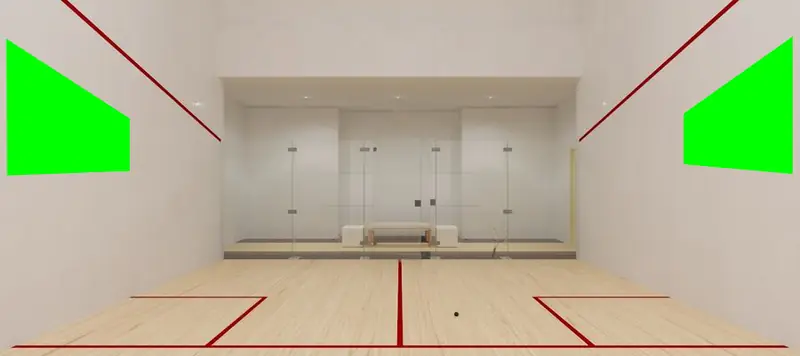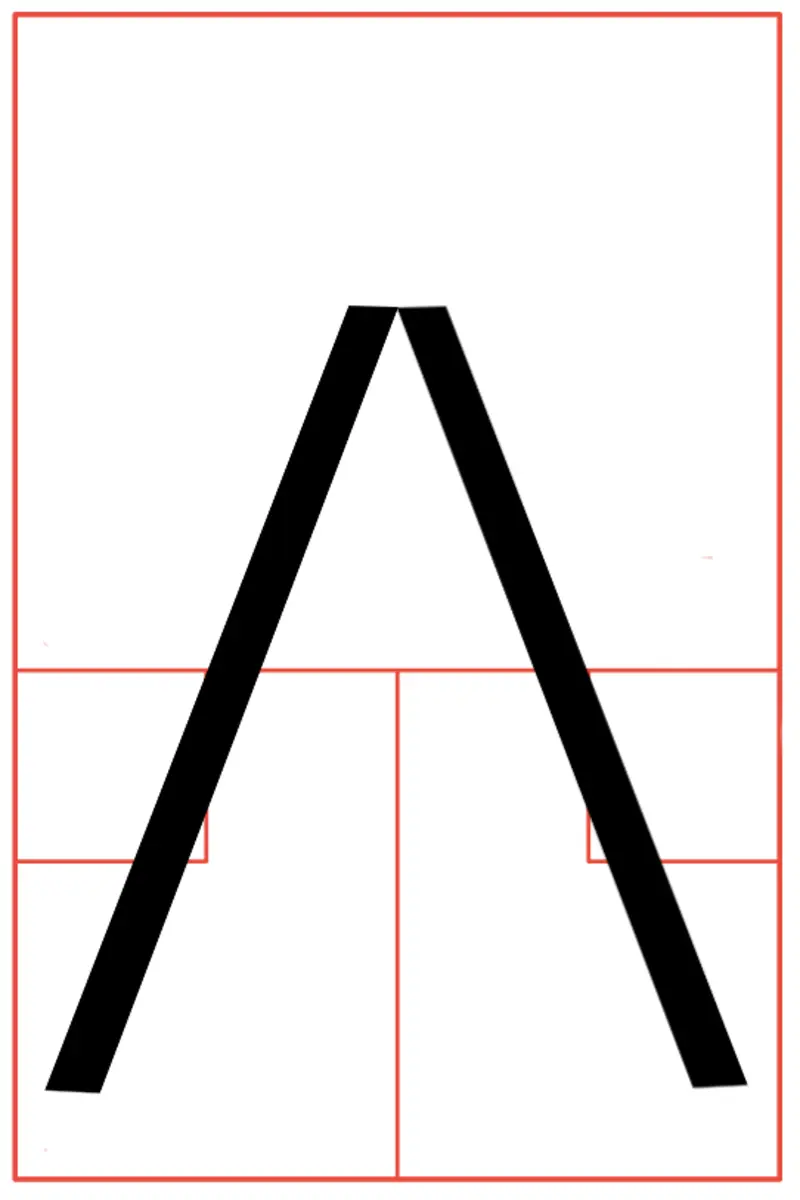04 September 2022 / 3-Min Read / Translate
A crosscourt is more than a shot across the court. Where exactly should it land or hit the wall, and just as importantly, why should it land there? I was a little disingenuous in the introduction, because straight drives can vary in speed, height and angle, but in general, a good straight drive is easier to understand. Before we look at the 3 types of crosscourts below, I want to emphasis that these are NOT the only types of crosscourt shots you can play, but they are ones that every club squash player should practice and use.
This is the crosscourt shot you should be playing most of the time. With it, you aim to stop your opponent from volleying the ball AND possibly get a weak return. Your objective is to make the ball hit the side wall no higher than a racket’s length and past the service box. It should hit the side wall because that will slow it down, also if you aim for the actual corner, the ball passes through the T area, making it much easier to volley.
As you can see from the image below, the closer to the corner your shot hits the side wall, the lower it should be. This is because otherwise, it will hit the side wall and come back towards the middle. Contrary to the image below, there is no difference between the left and right side walls – both target areas are the same size.

Hitting this target area takes practice and I highly recommend using a paper or similar target to help focus your mind. Simply knowing where you are aiming to hit the ball and having good swing technique is often not enough though. If you can hit this area consistently, you will find many club players struggle to return good shots from it. It probably won’t be a winner, but your opponent won’t be able to hit great straight returns.
PAIRS PRACTICE DRILL: Both players stand in a similar position to a service return. Hit one straight drive and then a crosscourt, aiming for the target area. The other player then attempts to hit a straight drive off your crosscourt. This drill allows you to practice the crosscourt AND the straight return from it. Try to make you straight drive bounce deep and then off the back wall.
Try it!
You find yourself at the front of the court, not quite full defensive (otherwise you would play a lob, right? RIGHT?), but not in a fully attacking position either where you could hit anything. It’s a kinda of limbo situation. This could be the perfect time for a crosscourt. Assuming your opponent is slightly forward of the T, as they should be if they have taken you short, and if you play the crosscourt described above, the ball pass through their volley zone – the area where a player can volley the ball without moving.

Your first objective is to stop your opponent from taking the ball early, i.e. volleying, but you also want to get the ball past them. The target areas shown above make it very hard for your opponent to volley, partly because they are so wide, but also because the angle the balls comes back causes timing issues.
Don’t hit the ball too hard because then the ball will bounce too high, but don’t hit it too softly either because then you are feeding your opponent! You’ll need to practice this shot to find the optimum hitting speed for you. I find that about 70% my maximum is about right. This shot will cause problems for your opponents, and give you time to get back to the T to really press your advantage.
PAIRS PRACTICE DRILL: Player 1 boasts the ball, player 2 either hits a drop or hits the crosscourt aiming for the green target area. if player 2 hits the drop, player 1 plays a high counter drop. If player 2 hit a crosscourt, player 1 tries to hit a straight drive to feed the boast. Player 2 only stays at the front, but tries to get back to the T. Player 2 can hit multiple consecutive drops if they want to.
Give it a go!
This is the only crosscourt of this group that should not be aimed at the side wall. It is generally played from the front when your opponent is out of position, perhaps from a drop you played. It can be played from other parts of the court, but you need to be really sure your opponent is not on the T. I’ve called this a “winner” but not a kill, because for me a kill is when aiming for the nick, but you may disagree.
The image below shows the path of the ball, as opposed to actual target areas. I suppose the path *is* the target area but the ball could take its first and second bounce any where within that path. If you hit the ball lower and slower, the second bounce could be before the short line, or you could hit it harder and the second bounce would be after the short line. It all depends on exactly where you and your opponent are.

The key element to notice about this shot is the the ball is always going away from your opponent. Perhaps the path shown could go right into the corner, but that’s why I called it the “path” not the “target area”. If you shot hits the side wall, it will slow down and make it easier for your opponent to get it.
Match Practice Plan: The best way to practice this shot is in real matches. By definition, it’s supposed to be a winner, so any pair routine will be too artificial. Assuming it’s a friendly match, every opportunity you get at the front, hit one of these shots and see the result. Some will work, others won’t, and your task is to understand why.
Can you do it?
These three crosscourts shots should be in every squash players arsenal. They create opportunities and when played at the right time, limit the chances of losing the point from your opponent’s return. Your homework is to watch advanced players or pros and become more aware of these types of shots. As with all squash shots, the balance between how hard you hit it and the angle is important. Don’t think that you should hit these as hard as you can, because they your accuracy will drop.